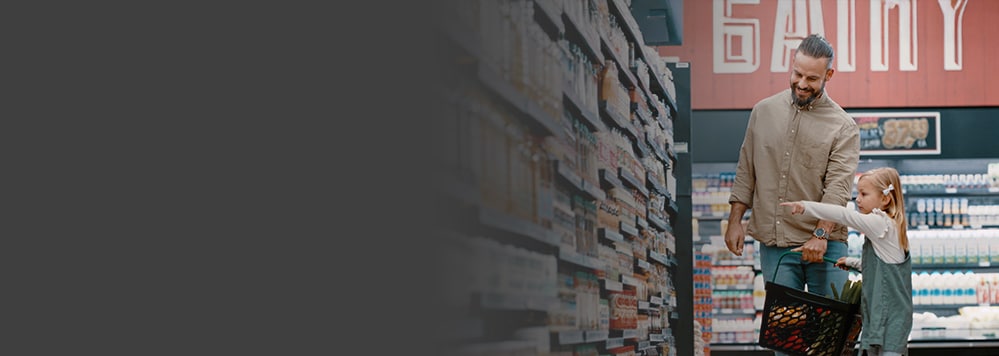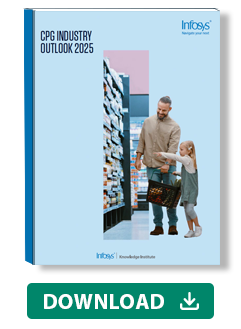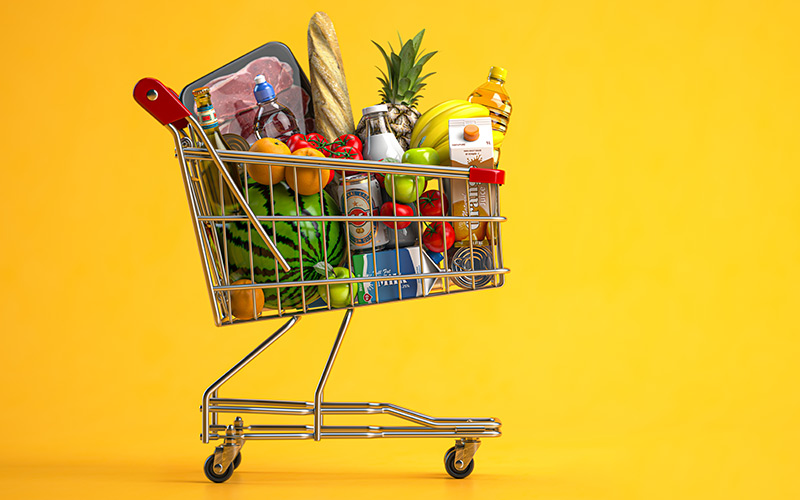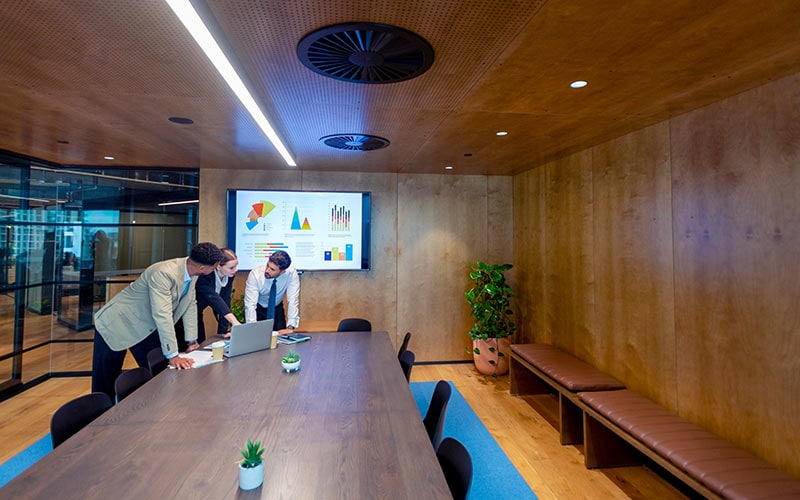Insights
- In 2025, CPG executives face intensifying competition, shifting consumer values, and geopolitical uncertainty.
- CPG growth will be driven by digital expansion, emerging markets, and value-conscious consumers seeking quality, ethical, and health-focused products.
- This will push brands to balance cost-efficiency with innovation, premiumization, and consumer-centric strategies powered by AI.
- M&A activity, investment in consumer intelligence startups, and strategic outsourcing are gaining momentum. But fully unlocking AI’s potential will require robust data foundations, skilled talent, and a culture of responsible, enterprise-wide adoption.
Executive summary
Global consumer spending on consumer packaged goods (CPG) products is expected to continue its upward trajectory in 2025 to reach 6%. Fast-growing digital sales and rapid expansion in emerging markets such as Asia-Pacific (APAC) continue unabated with online sales outpacing physical retail growth and consumers continuing to demand more flexibility and convenience.
In 2024, CPG companies had started to prioritize volume-driven growth. They will need to continue to do so, with consumers also continuing to look for value for money and reasonably priced products, and still unwilling to accept any significant price increases.
The biggest challenges for CPG executives in 2025 are growing competition for shoppers, reduced consumer spending, and increased pressure from retailers. Other difficulties include rising prices of raw materials, disruptions in supply chains, and shifts in consumer behavior in terms of purchasing decisions based on values like health, ethics, and sustainability, and preferring quality over quantity, which will require CPGs to align to their offerings. Their priorities include reducing costs and improving efficiency, along with consumer-oriented marketing. This includes premiumization, which is delivering value to customers through positive experiences related to novel products, higher quality, and improved messaging.
A further key challenge is the wider geopolitical landscape, which demands robust scenario planning around trade flows, tariffs, and supply chains, as well as being able to forecast demand and meet it accordingly. Artificial intelligence (AI) tools can help by strengthening supply chain resilience and responsiveness, but CPG companies must learn how to fully unlock the value of their AI investments.
Financial insights
As per IMF, global annual inflation — after peaking to 9.5% in September 2022 during the Covid period — has seen a decline, reaching 4.7% in January 2025. However, despite inflation falling to almost half of what it was during the Covid period, slower wage growth during that period means that consumer spending hasn’t risen, and so consumers are being careful about how they spend their money.
This means that the CPG industry must accommodate a shift by consumers to cautious, intentional consumption — where they might spend a little more but toward more thoughtful and value-led purchasing. Instead of looking for the lowest price, consumers are making choices that reflect their beliefs, preferences, and lifestyle goals — prioritizing health and wellness, environmental sustainability, ethical production practices, and personalized experiences. To keep pace, CPGs must reframe product value not just through affordability, but through alignment with consumers' personal values. This means enhancing transparency around ingredients, sourcing, and production methods; and delivering experience-driven offerings.
The lipstick effect is shifting. As prices of small luxury items have surged, consumers are no longer reaching out for those items. CPG companies need to rethink their value delivery — making fewer and quality products available instead of having frequent launches.
Cautious consumers
Global retail sales of key sectors including food, beverages, and household and personal care items slowed last year to 7.5% year on year, down from 9.3% in 2023 and 9.8% in 2022, driven by rising prices. The slower growth is set to continue in 2025, with consumer spending expected to grow by 6% from last year’s figure of $7.5 trillion. This cautious approach extends to eating out and entertainment outside the home.
The CPG industry must accommodate a shift by consumers to cautious, intentional consumption — where they might spend a little more, but on more thoughtful, value-led buying.
Meanwhile, consumers are also expected to spend cautiously on products for use at home, such as garden furniture, gaming consoles, and workout equipment. There is a rise in the number of consumers who are prepared to pay more for high-quality, ethically sourced foods from premium brands: Plant-based, and non-genetically modified organism products are becoming popular.
Brands can encourage cautious consumers by offering good quality products at reasonable prices, as well as flexible payment options. Costco is among retailers launching a buy now, pay later option, for example.
Market size and CAGR
The global CPG market size is predicted to increase by nearly $1.5 trillion between 2024 and 2029, growing at a compound annual growth rate (CAGR) of 4.9%, driven by rising e-commerce sales and the growth in direct-to-consumer (DTC) brands. Increasing urbanization and higher disposable incomes are also driving greater consumption, particularly in emerging markets.
North America continues to be a major force, with the US CPG industry alone generating over $900 billion in annual sales. The US and Canada are also at the forefront of innovation, particularly in plant-based and organic foods. Meanwhile, APAC — driven by populous markets like China and India — is emerging as a key growth hub. Consumers’ increasing disposable incomes and exposure to newer products are driving an increased preference and demand for premium items.
Ad spending
In 2024, for the first time, spend on digital video beat traditional TV broadcasting ad spend in the US. This is expected to continue. Digital video ad spend in 2024 was $64 billion and is set to increase by 14% in 2025 to $72 billion. The proliferation of connected TV, social video, and online video is aiding this growth. The sector is expected to boost its digital video ad investment by 13% this year, as the medium can help deliver highly personalized ads to the right audience.
Industry dynamics
Mergers and acquisitions
Consumer and retail companies are expected to streamline their operations by divesting noncore assets, underperforming product lines, and subsidiaries that fall outside their long-term strategic goals. Infosys is seeing several clients and CPG majors aspiring to retain high-performing, well-recognized brands, while exiting the bottom quartile or reallocating capital from lower-margin businesses toward core growth areas. As margin pressure intensifies, strategic carve-outs and divestitures will become more common, enabling reinvestment in more profitable segments.
The year 2024 saw some major acquisitions in the CPG industry. The Mars Kellanova acquisition — the largest deal in the CPG industry to date — and Campbell Soup Company’s acquisition of Sovos Brands helped the brands diversify their portfolios and boost their revenue growth.
In 2025, the continued emergence of consumer intelligence startups is projected due to the focus on collecting, analyzing, and applying data about consumers to help businesses get actionable insights. There’s a strategic push toward growth of private labels — that is, a store’s own brands — fueled by wanting full control over product development, pricing, placement, and promotion to respond faster to consumer trends.
Due to the increased interest from Gen Z, it’s expected that deals in food and beverage (F&B) related to health-conscious foods and drinks particularly could take place. ”From the consumer standpoint, now there's a big shift toward healthy options. And all the big players in the industry are having to take a step back, rethink their strategy, and see how they increase their presence in the healthy segment,” Mayank Ranjan, Infosys regional head for Americas, consumer, retail & logistics, told a webinar audience in 2025.
This also holds good for sustainable beauty brands and pet food brands due to increasing consumer preference for sustainability and organic foods. For example, e.l.f. Beauty is set to acquire Hailey Bieber’s skincare line, Rhode, in a $1 billion deal. The acquisition supports e.l.f.'s strategy to deepen its presence in skincare and appeal to a more affluent customer base. The transaction is expected to close in the second quarter of e.l.f.’s fiscal 2026, which falls later this year. This is a big deal by industry standards as, unlike long-standing players considered for M&As, Rhode is a fairly young brand, with only three years in the business, and also has a limited range of products.
Regulatory changes
The unpredictability surrounding US government-imposed tariffs has created significant disruptions in the CPG sector. Pharmaceutical companies like Novo Nordisk and Roche, which generate over 40% of their sales from the US while incurring less than a third of their costs there, will be affected hugely, along with consumer electronics manufacturers such as Samsung. This could lead brands to move their production to US to save on tariff costs, if not shift focus to other markets for sales.
Japanese brewer Asahi plans to expand its manufacturing capacity at its Wisconsin facility. Prices of key raw materials like cocoa, coffee beans, and spices — imported from countries impacted by these tariffs — have surged. In response, CPG brands have been forced to raise prices for consumers. This turbulence has affected market confidence, causing a decline in the share prices of CPG retailers such as Costco, Walmart, and Best Buy. CPGs will need to understand how price increases will affect consumer spending and demand for products, and adapt strategies accordingly.
Talent management
The CPG industry struggles with talent management, with research in the US finding that 71% of respondents said they have talent scarcity. IT and data were stated as the most difficult skills to find, and they are most in demand. To address this challenge, employers are raising salaries, investing in upskilling their existing workforces, and exploring new talent pools to strengthen their teams. Upskilling will be particularly significant in areas such as data analytics and consumer insights, product innovation, and e-commerce, as CPGs look for better ways to understand customers and appeal to them through personalization.
Sustainability investment
Consumers are continuing to place an emphasis on eco-friendly products and prioritize brands that sell them and are transparent about their sustainable practices. Some 76% of consumers said they will stop buying from brands that treat the environment and employees poorly, and 57% believe companies should take a more active role in addressing environmental challenges.
With consumers showing greater loyalty to businesses that support social and environmental causes, it’s no wonder CPG brands are focusing on sustainability. Heineken supports the UN Sustainable Development Goals and has committed to reducing waste generation by 2030 through prevention, reduction, recycling, and reuse initiatives. Nestlé has pledged to reach net-zero greenhouse gas emissions by 2050, with an interim goal of cutting emissions in half by 2030, and it is also focused on reducing plastic waste. Henkel is committed to using less plastic in its packaging.
Trends
Trial sizes and minis
Consumers increasingly want quality without spending too much, and retailers are responding to this by offering smaller-sized products. US retailer Target reports that sales of travel-sized products have more than doubled over the past couple of years. This means consumers can experiment with luxury brands while keeping their spending down, while brands hope that they will switch up to full-sized products after sampling them. It’s no wonder makeup brands have seen a rise in demand for these products. Brands that have debuted in the minis area include e.l.f. Cosmetics, Jones Road Beauty, and Le Labo.
TikTok recipes
Driven by growing demand for social media endorsements, the global influencer marketing platform market is projected to surge from $23.5 billion in 2025 to nearly $71 billion by 2032, growing at a CAGR of 17%. With social media still captivating millennials and Gen Z, TikTok recipes — featuring quick, simple, and fuss-free dishes made popular by influencers — are taking off and going viral. They allow influencers to use sponsored ingredients as part of their food videos.
As per global research, 14% of marketers and industry leaders invested between 10% and 15% of their marketing budget on influencer marketing. Brands such as Pillsbury, Kraft Heinz, and Ghirardelli are collaborating with TikTok influencers to create at-home desserts, weeknight recipes, or three-ingredient dishes. Kraft Heinz saw a 5.7% engagement rate from an influencer program, 103% higher than the average engagement rate on their own brand channels.
Besides recipes, packaged foods such as the Dubai pistachio chocolate and Swedish candy have also shot to fame on social platforms such as TikTok and Instagram, becoming a fun way to introduce audiences to global foods.
Healthy aging and biohacking
The concept of healthy aging is driving consumer behavior, with its focus on lifestyle, diet, and exercise. Consumers are turning to products and supplements that claim to optimize health, sleep, and metabolic function. Valued at $40 billion in 2025, the global dietary supplement market is expected to expand at a 9.5% CAGR to reach $60 billion by 2035, indicative of a rising demand for supplements.
The shift to outsourcing
The shift from selling through online marketplaces to juggling multiple channels like social commerce, D2C, and buy online, pick up in store (BOPIS) has brought operational and strategic challenges for CPGs. To manage this, many CPG companies are outsourcing their e-commerce tech infrastructure and core operations, aiming to build the right capabilities while controlling costs and staying competitive. However, staffing these shifts is a challenge: Alibaba, the Chinese e-commerce giant, faced a shortage of local expertise in certain areas, particularly US-based web development. It turned to outsourcing partners to enable themselves to tap into a wider talent pool, raise the bar on quality, and concentrate more on its core operations.
“You’re seeing companies organize their back-office operations, whether through outsourcing or through having their own centers,” said Mayank Ranjan. He added: “The last decade or so, or even a little more, saw a lot of robotic process automation to improve human efficiency.”
Technology outlook
Artificial intelligence
With tariff-related price hikes and the need to set the right price for products, AI’s role in accurate pricing forecasting to maximize consumer sales and price pack architecture — based on customer data, behaviors and forecast demand — will be even more relevant for CPGs.
Incorporating AI into their logistics, supply chains, and marketing can help businesses work with more accuracy. AI aggregates data from various sources, including GPS, traffic systems, and weather services, to analyze and optimize routes dynamically, and to respond in real time to changing conditions like congestion, weather disruptions, and road closures.
Infosys’ generative AI survey found that 35% of CPG respondents have implemented or are currently implementing generative AI solutions. And as per the CPG respondents surveyed in Infosys’ AI Business Value research, more than half of AI use cases generate tangible business value, on par with the industry average (Figure 1). Marketing and product development were seen as highly viable use case categories for CPG companies — that is whether the use cases in these categories are likely to achieve some or all objectives or generate business value (Figure 2).
Figure 1. More than half of AI use cases generate business value
Source: Infosys Knowledge Institute
Figure 2. Functional use case category by popularity and viability
Source: Infosys Knowledge Institute
“For a global food services company, Infosys helped implement generative AI enabled chatbots to act as knowledge assistants for employees, affiliates, and sales leaders, enabling higher collaboration and compliance to policies. For a global sportswear brand and another prestige beauty brand, Infosys used AI-powered insights for product innovations, to reduce concept to market time by 30%,” says Ritu Choudhri, Infosys senior director, client services, consumer, retail, and logistics.
In-store digital interventions
Heightened knowledge of their inventory is imperative for CPG businesses to remain competitive. Internet of things (IoT)-enabled smart shelves track stock levels and customer behavior in the store. This data helps businesses plan better store layouts and manage inventory, enhancing the overall shopping experience and operational efficiency. Using IoT devices such as RFID sensors and smart cameras, CPG companies continue to gain real-time visibility into their inventory status. These technologies send instant notifications when stocks run low or items are out of place, enabling store staff to respond quickly.
There are also further innovations in smart shelves. Kroger has deployed smart shelving across 120 of its supermarkets in the US that display digital ads, real-time prices, and helpful content like nutritional info or labels such as “gluten-free” and “I’m local!” Bluetooth connectivity syncs with customers’ shopping lists on their phones, lighting up the shelf beneath the exact items in the list. This has helped the brand boost its sales in the outlets where the shelves have been implemented.
CPG businesses are also using AI in retail execution to aid merchandising activities. Infosys is using digital planograms to help clients optimize in-store promotions and apt aisle placements and draw more consumers. Monitoring and responding to competition signals via dynamic pricing are another popular use case with Infosys clients, as it delivers a rapid return on investment.
Key takeaways
- The rapid expansion of digital sales and emerging markets will remain key growth drivers for the CPG industry.
- Consumers are becoming increasingly value-driven, seeking products that are aligned with their values on health, wellness, ethics, and sustainability.
- Brands that deliver quality products at accessible prices will attract value-conscious consumers.
- CPG majors will continue to focus on volume-driven growth, cost reduction, and operational efficiency while investing in insight-driven, consumer-centric marketing and AI-powered innovation.
- M&A activity is strong, with deals like Mars–Kellanova and e.l.f.–Rhode reflecting portfolio diversification and growth ambitions. CPGs must target acquisitions that strengthen core categories and expand into high-growth segments.
- Emerging consumer intelligence startups are attracting attention for their ability to turn shopper data into actionable business insights. CPGs should monitor and invest in early-stage consumer intelligence brands to stay ahead of consumer trends.
- For CPG businesses, gaining an outside perspective on where and how to centralize, and identifying the right partners to do it with, can strengthen resilience and sharpen their competitive edge. CPGs can look at outsourcing their e-commerce technology and operations to service partners as a way to get access to specialized tech faster and to cut costs, freeing them up to focus on core business issues.
- CPGs are experimenting with artificial intelligence across a range of business areas including as supply chain, revenue growth management and pricing, procurement, field execution, and personalized marketing. However, Infosys research has found that only 35% of CPG respondents have implemented or are now implementing generative AI solutions. To unlock the full potential of AI, companies must first establish strong foundations — a robust data infrastructure, sourcing skilled talent, creating an AI foundry to deploy AI measures effectively and responsibly, and building a culture that encourages the use of AI across the organization.
- While the uncertain geopolitical landscape is causing businesses to worry, they can rely on AI in part to solve challenges related to pricing, sourcing, and logistics, even if not fully.








